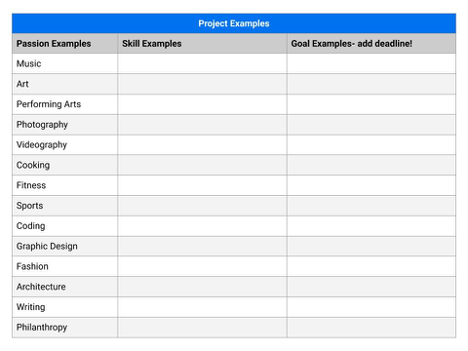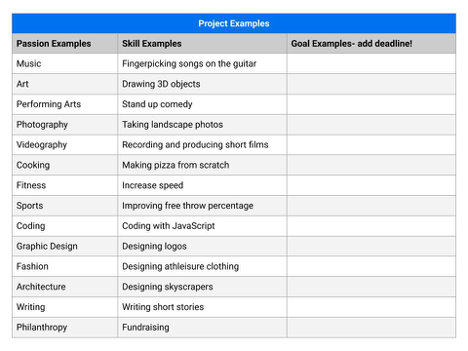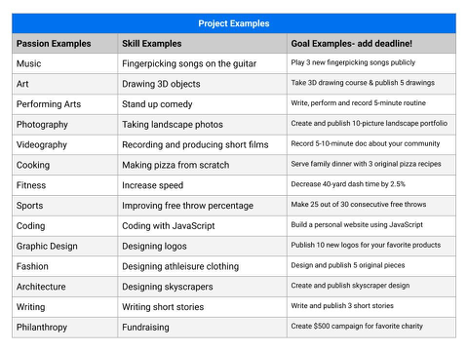“There is no passion to be found playing small- in settling for a life that is less than the one you are capable of living.” Nelson Mandela
I thought there was no way my August wedding would be affected.
But it seems like the pandemic is here to stay for a while.
Some days I find myself so frustrated life isn’t back to normal.
I’m sure your students have struggled with their disrupted summers, compromised learning, and constant uncertainty.
But on my better days, I remind myself this is completely outside of my control. All I can do is focus on what’s in my control and make the best of the situation.
Yes, so much is outside the norm for students right now. There are some things they just can’t do.
But there’s still so much they can do.
We just need to help them think outside of the box. By “box,” I mean the normal structure of school, sports, extracurriculars, work.
With our help, they can do something incredible for their future in the next few weeks.
Something arguably better than if nothing had changed.
The Project
The goal of this project is designed to help your students make meaningful progress towards a future that lights them up with excitement and passion.
To create this life, they need to turn their passions into real skills.
Below are instructions for the 4 components of the project with examples to spark ideas.
1. Choose one specific passion you have (or have wanted to explore)
“Every great dream begins with a dreamer. Always remember, you have within you the strength, the patience, and the passion to reach for the stars to change the world.” Harriet Tubman
When do you lose track of time because you’re having fun? What do you read, play, and watch when you have free time? What comes easier to you than it comes to your friends?
Choose that as your passion for this project.

2. Choose a specific skill you want to develop around that passion
“We must act out passion before we can feel it.” Jean-Paul Sartre
Narrow your passion down to a tangible skill you want to build or improve.

3. Set your project goal
“I think goals should never be easy, they should force you to work, even if they are uncomfortable at the time.” Michael Phelps
Don’t forget to set a deadline. Try to do this in 4 weeks or less to challenge yourself.

4. Create your schedule
“Action expresses priorities.” Mahatma Gandhi
Work backwards from your deadline to create your most important milestones and design your weekly schedule.
Example 1
Goal: Write and publish 3 short stories in 4 weeks
Daily Commitment: 3-5 hours
Week 1: Outline all 3 stories and begin writing Story #1
Week 2: Finish rough draft for Stories #1 and #2, begin draft for Story #3
Week 3: Finish rough draft for Story #3 and begin editing all 3 stories
Week 4: Complete editing for all 3 stories and publish on medium.com
Example 2
Goal: Make 25 out of 30 consecutive free throws in 4 weeks
Daily Commitment: 2 hours
Week 1: Research free throw technique and psychology, compare that to your problem areas, outline practice schedule and drills to get better
Week 2: Daily practice, make 19 out of 30 by the end of week
Week 3: Daily practice, make 22 out of 30 by the end of week
Week 4: Daily practice, make 25 out of 30 by the end of week
5. Publish your results
“It’s very hard to put yourself out there, it’s very hard to be vulnerable, but those people who do that are the dreamers, the thinkers and the creators. They are the magic people of the world.” Amy Poehler
Documenting and publishing your process and/or results makes this project real.
You can and absolutely should put this on your resume, add this to your LinkedIn profile, and include this in your portfolio.
Additionally, you should publish this project using at least one of the following examples:
- medium.com
- YouTube
- Social media
- Your own website
- Send this project to a mentor or accomplished professional in this field
- Any other places or ideas you have
Closing
Most people dream of doing work they love, but justify waiting because current circumstances aren’t perfect.
If there’s one thing I’ve learned in my 10 years as an entrepreneur, conditions will never, ever be perfect.
You’ll be stuck waiting for a moment that never comes. Before you know it, so much time will have passed that could have been used for progress.
And progress isn’t pretty, neat, or perfect.
You just have to get started, and a project like this is a great way to do that.
Help your students get started on their dream life today.
For breakfast, I had Athletic Greens and coffee.
